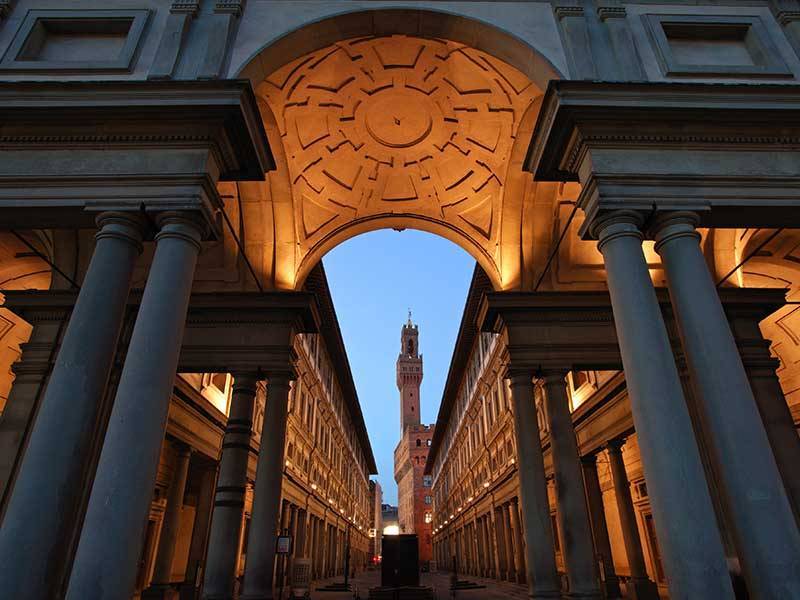Revolution Sweeps Italian Museums
The Italian press has dubbed the move “revolutionary,” and so it is. For the first time in the history of Italian state museums, the selections are not made from among the art historians in the employ of the Ministry of Culture, save for one. The aim of Culture Minister Dario Franceschini is to improve the quality of management of the museums, but also – so say his critics – to say, and loudly, that “We’re turning a page. These twenty nominees of such high international scientific standing signify renewal after decades of delay.”
On the other hand, as Italy’s most authoritative archaeologist Salvatore Settis – who himself directed a state museum in Turin – it’s fine to have new museum manager-directors, but the problems remain that museum funding was slashed back in 2008 and has not been restored, as were the number of their employees. Moreover, says Settis, those who have worked as curators are not necessarily good directors. “Not one of the foreign appointees has been director of a large museum, and some have never even worked in one.”
The selections were made by a committee headed by Paolo Baratta. Interviewed, Baratta said that, “Outside of Italy an articulated career exists, but here in Italy either you’re a director or a custodian.” Among his committee’s criteria for selecting which museums was their role in research. Money also matters: “Outside of Italy museum directors can also do fund-raising,” he pointed out. Visitors to Italian museums have inceased this year over last, to judge by the first quarter, by almost 10%, with income surging by almost 13% over the same period.
Italian citizens have joined in the debate. For the move is Ugo Baistrocchi, writing that, “Minister Franceschini has done well to name seven Europeans [i.e., non-Italians] to direct the most important Italian museums, but why not do the same for cinema, spectacle and tourism?” Mariaurelia Viotti of Genova disagrees: “I don’t understand this love for the foreigner, which damages us – why should a foreigner be better entitled to head the Uffizi rather than a notable Italian?”
Becoming the first non-Italian director of the Uffizi since the museum was opened in 1769, Eike Schmidt leaves the Minneapolis Institute of Art, where he has been curator and department director. He has also worked at the J. Paul Getty Museum in Los Angeles, the National Gallery in Washington, D.C., and at Sotheby’s auction house in London. Another appointee with long experience is Canadian-born James Bradburne, 59, whose nine successful years as director of Palazzo Strozzi in Florence have made him familiar among Italians. Bradburne will head the Brera Pinacoteca in Milan. Peter Aufreiter, 40, Austrian and a graduate in art history from Vienna, takes over the Galleria delle Marche at Urbino.
Among the other non-Italians is art historian Sylvain Bellenger of France, who leaves the Chicago Art Institute to direct the Capodimonte Museum in Naples. Peter Assmann, 61, who is Austrian, takes over the Palazzo Ducale at Mantua; for ten years he was president of the Association of Austrian Museums. The youngest, at 34, is German archaeologist Gabriel Zuchtriegel, who will head the important classical site of Paestum; with broad international experience for his age, he has recently been teaching Greco-Roman art at the University of Basilicata. German-born Cecilie Hollberg, 48, comes from the Stadtisches Museum of Brunswick, which she directed, and will take over the Gallery of the Accademia in Florence.
The Italian Paolo Giulierini, archeologist, 46, goes to the National Archeological Museum in Naples. Carmelo Malacrino, 44, archaeologist and architect born in Catanzaro, assumes direction of the National Archeological Museum at Reggio Calabria. Siena-born Marco Pierini, 49, will direct the National Gallery of Umbria in Perugia. Mauro Felicori, 63, originally from Bologna, assumes direction of the Reggia at Caserta.
In addition to Hollberg, the other female nominees are Anna Coliva, 62, just renewed as director of the Borghese Gallery, which she has headed, with kudos, since 2006; she is the sole Culture Ministry appointee. From Cagliari, Cristiana Collu, 46, comes to the National Gallery of Modern Art in Rome from museums in Trento and Nuoro. Paola Marini, 63, passes from directing Verona’s Civic Art Museums to the Accademia Galleries in Venice. Martina Bagnoli, 51, had worked for the National Gallery in Washington, D.C., and in Baltimore, and will head the Galleria Estense in Modena. Paola D’Agostino, 43, leaves the Yale University Art Gallery to head the Bargello Museum in Florence. Art historian Martina Bagnoli, 51, goes from Bolzano to the Galleria Estense. The new director of the National Gallery of Ancient Art in Rome is Flaminia Gennari Santori, 47, art historian.
At 39 the second youngest, Eva Degl’Innocenti will direct the National Archaeological Museum at Taranto; she comes to Taranto from the Breton Museum. Serena Bertolucci, 48 and an art historian born at Camogli, will direct the Palazzo Reale of Genoa. The new director of the Polo Reale of Turin is Enrica Pagella, 58, born at Ivrea.
(For full mini-biographies of the foreigners selected, see, in Italian >>>)


































i-Italy
Facebook
Google+
This work may not be reproduced, in whole or in part, without prior written permission.
Questo lavoro non può essere riprodotto, in tutto o in parte, senza permesso scritto.